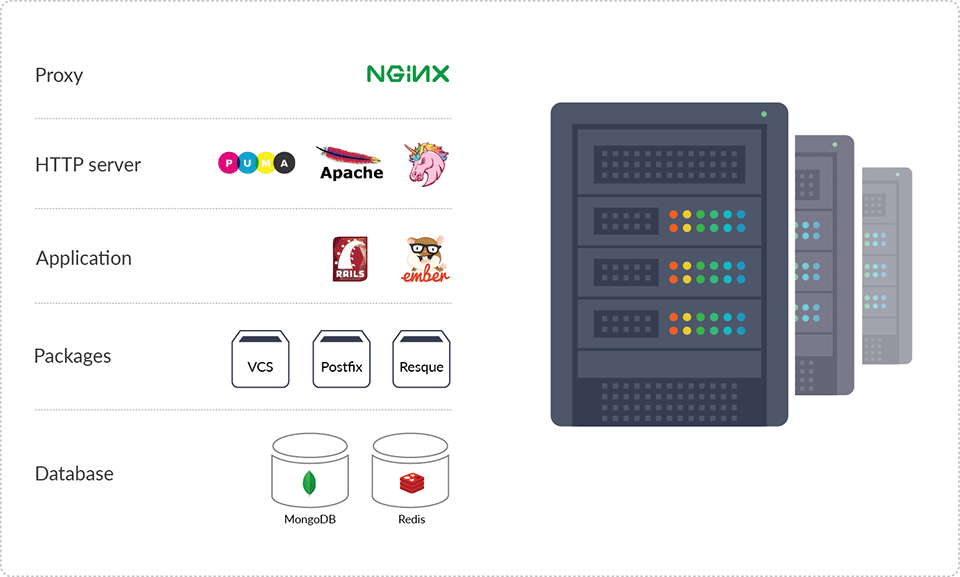System architecture
Helix DAM software is composed of popular and powerful open source technologies, which are used in today’s most advanced cloud solutions. The architecture is layered. Each component has its own role in serving user requests.
Helix DAM is built on top of Helix TeamHub. To install Helix DAM, use the Helix TeamHub packages. To administer Helix DAM, use the web-based TeamHub admin interface.

The entire stack is provided as a standalone native operating system package, also known as a Standard setup. Alternatively, the Helix DAM stack can be split into a number of servers, known as a Enterprise setup. Regardless of the deployment type, the logical layers are as follows:
Proxy
Nginx proxy sits at front and handles all user requests. Based on the operation type (static page, version control system, or Web application) requests are forwarded to the appropriate component.
HTTP server
Helix DAM has three HTTP servers: Apache, Unicorn and Puma. Apache is responsible for handling version control operations, Unicorn serves Helix DAM Web applications, and Puma handles webSocket connections.
Application
Helix DAM consists of two major components. On the front end is Ember powered application responsible for providing UI to TeamHub APIs. The back end is powered by Ruby on Rails, which exposes RESTful APIs and the TeamHub Admin UI. It's important to note, Helix DAM adheres to an API-first strategy. Any functionality seen in the Helix DAM UI can be achieved programmatically with Helix TeamHub APIs.
Packages
Helix DAM relies on various open source packages that are bundled with Helix DAM. Packages are precompiled for Helix DAM supported operating systems, and are completely isolated from the rest of the system. Following are some of the packages bundled with Helix DAM:
- Resque - Handles background jobs.
- GraphicsMagick - Processes images uploaded to Helix DAM.
Database
At the heart of the stack are the two NoSQL databases. MongoDB is used for storing application data. Redis keeps intermediate data, background jobs and events for example.
File system hierarchy
Helix DAM closely follows Linux File System Hierarchy Standard for its data and bundled packages. Here is the layout of the file system hierarchy Helix DAM uses:
/opt/hthThe root folder for application and its dependencies./opt/hth/binThe admin utilities and tools (see Helix TeamHub control)./var/opt/hth/sharedThe data directory with all user data, such as repositories and uploads./var/opt/hth/dbThe database directory./var/opt/hth/backupsThe directory where backups are stored./var/log/hthApplication and system logs.
For a detailed list of system-wide configuration files that Helix DAM touches, see System overrides.






